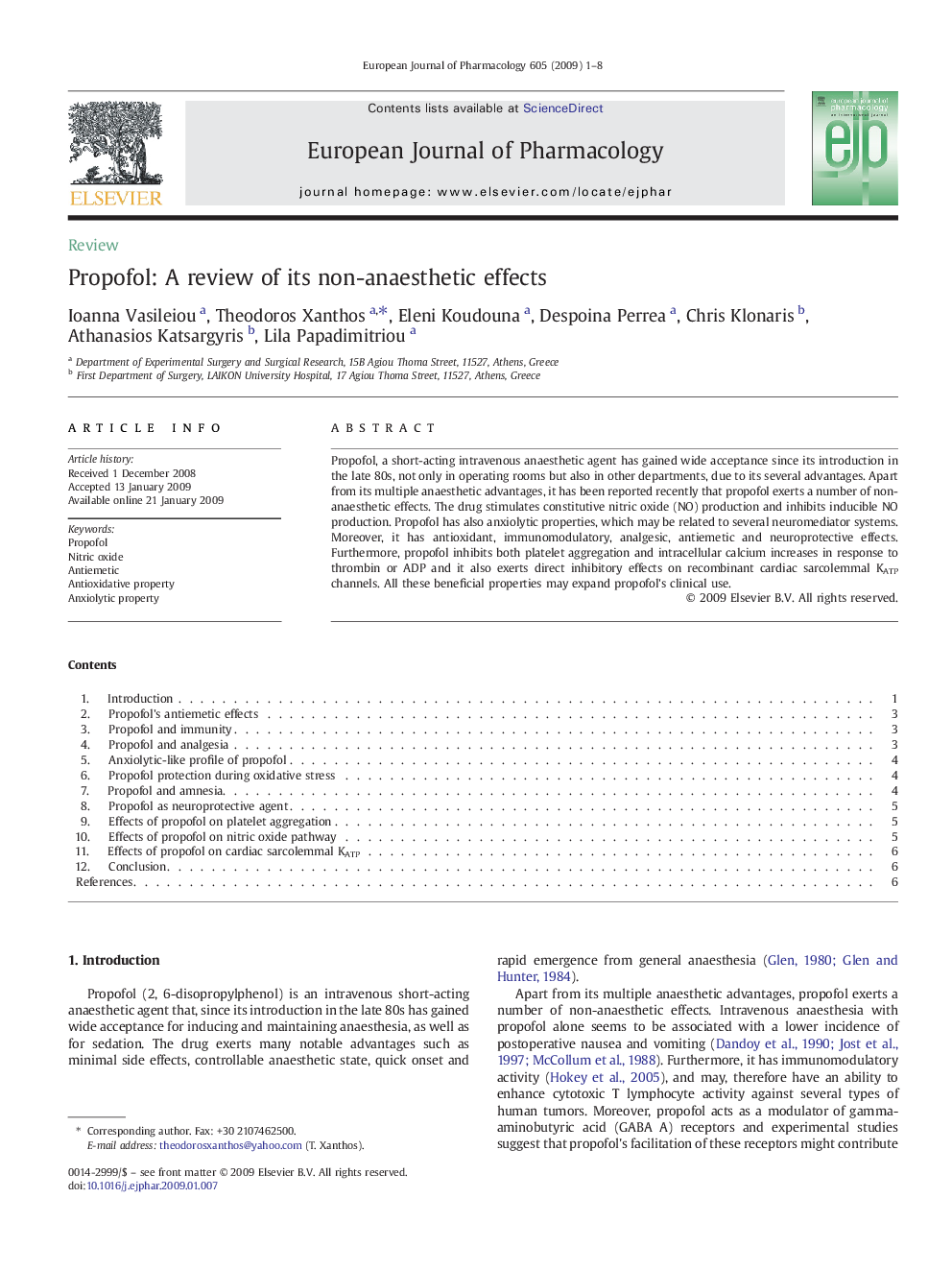| Article ID | Journal | Published Year | Pages | File Type |
|---|---|---|---|---|
| 2534651 | European Journal of Pharmacology | 2009 | 8 Pages |
Propofol, a short-acting intravenous anaesthetic agent has gained wide acceptance since its introduction in the late 80s, not only in operating rooms but also in other departments, due to its several advantages. Apart from its multiple anaesthetic advantages, it has been reported recently that propofol exerts a number of non-anaesthetic effects. The drug stimulates constitutive nitric oxide (NO) production and inhibits inducible NO production. Propofol has also anxiolytic properties, which may be related to several neuromediator systems. Moreover, it has antioxidant, immunomodulatory, analgesic, antiemetic and neuroprotective effects. Furthermore, propofol inhibits both platelet aggregation and intracellular calcium increases in response to thrombin or ADP and it also exerts direct inhibitory effects on recombinant cardiac sarcolemmal KATP channels. All these beneficial properties may expand propofol's clinical use.
